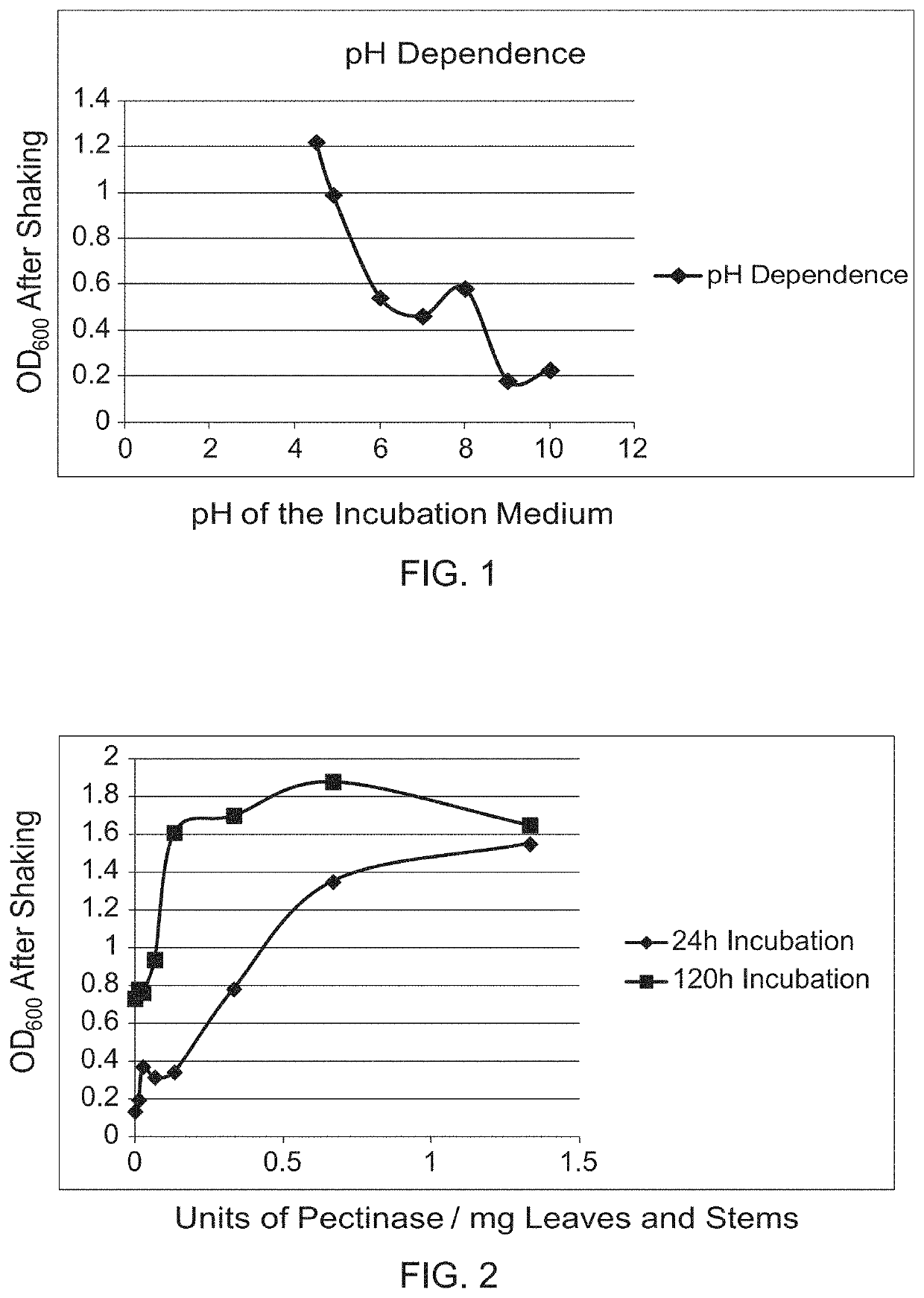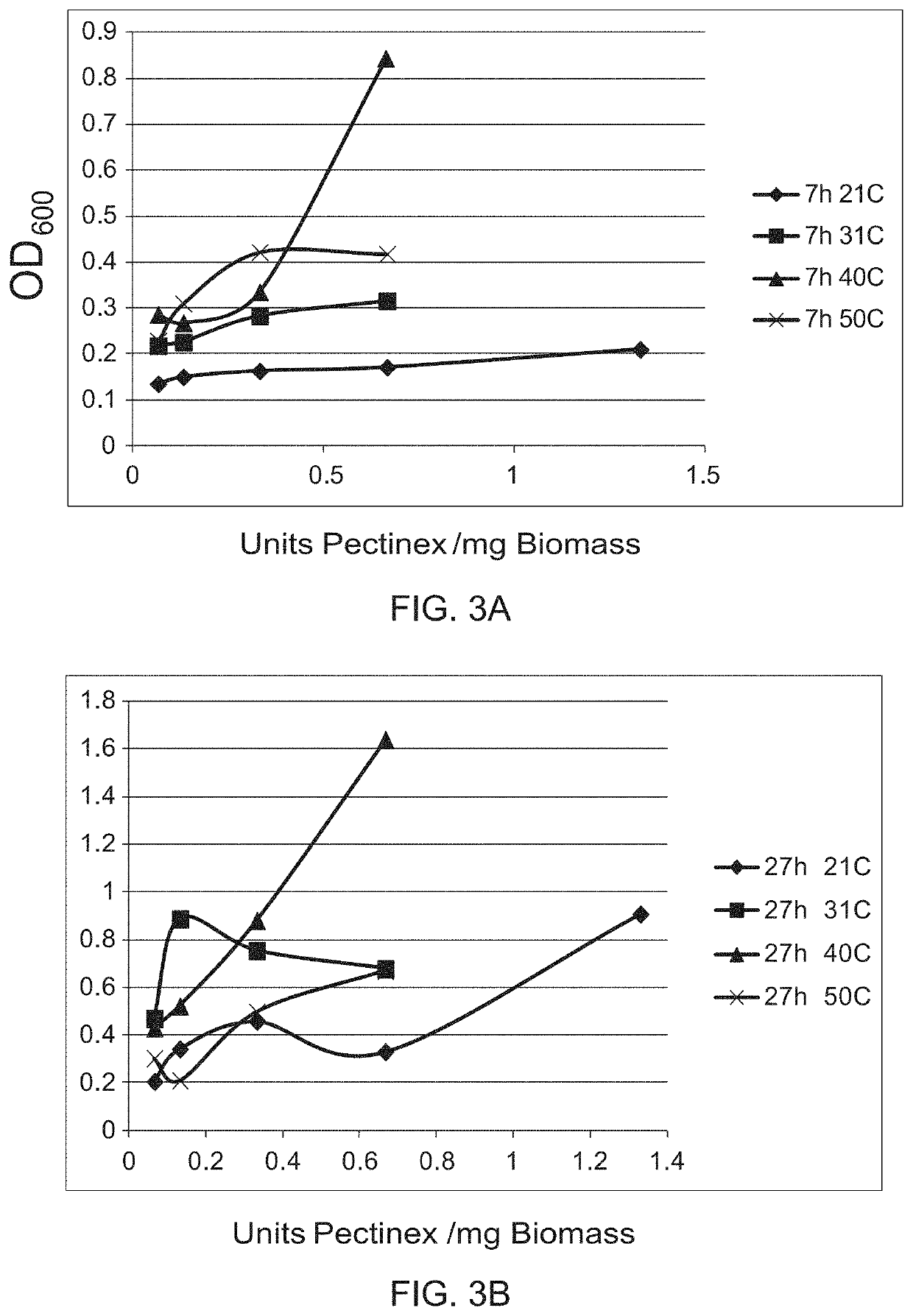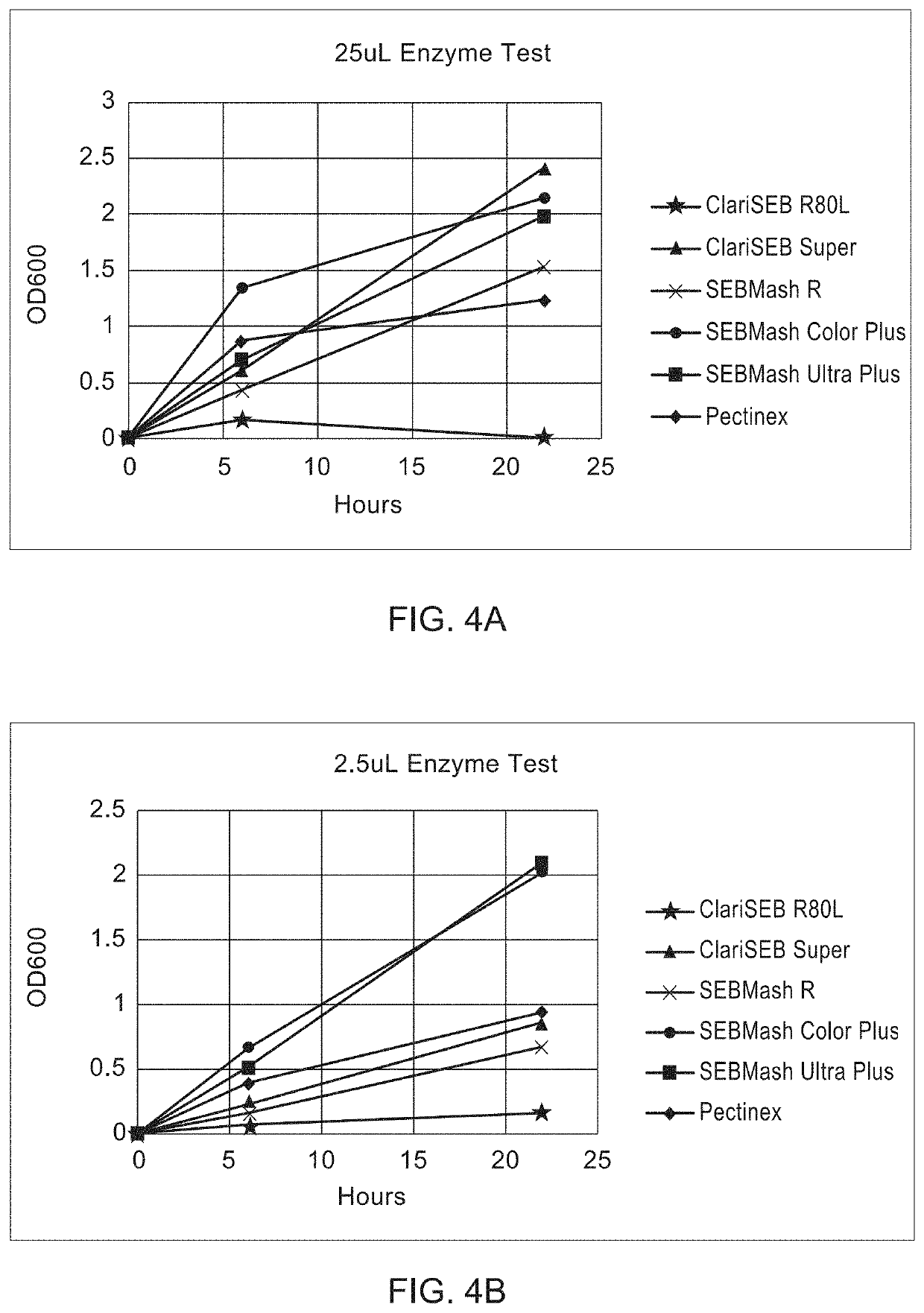Enzymatic and Acid Methods for Individualizing Trichomes
a technology of trichome fibers and acid methods, which is applied in the field of individualizing trichome fibers, can solve the problems of difficult to obtain “clean” trichome fibers in large amounts, inconvenient operation, and inability to meet the needs of consumers of fibrous structure products
- Summary
- Abstract
- Description
- Claims
- Application Information
AI Technical Summary
Benefits of technology
Problems solved by technology
Method used
Image
Examples
example 1
tion that Pectinases with or without Cellulases Release Trichomes
[0107]Leaves, stems and bracts from dried Lamb's Ear were cut into 3-5 mm pieces. The 150 mg of plant material was wetted by adding 0.01% w / v of Triton X-100 in 20 mL of 50 mM potassium phosphate buffer, pH 4.5 in 250 mL shake flasks. Pectinase enzymes were added in the relevant flasks for a total of 200 U (100 U each of pectinase from Aspergillus niger (Sigma Cat. #17389) and Aspergillus aculeatus (Sigma Cat. # P2611), or 200 U of the individual pectinase). Where noted, 100 U of Trichoderma reseii cellulase (Sigma Cat. # C2730) was added. The experiment was initiated by addition of enzyme. Enzymes were added to the samples, gently swirled to dissolve and distribute the enzymes, and incubated without shaking at 21° C. After incubation for 24 and 48 h, the flasks were vigorously shaken by hand for 1 min before drawing off liquid. Samples were observed for trichome release and the OD600 was measured (Table 1). Both a mix...
example 2
pH on the Enzymatic Processing of Lamb's Ear Trichomes
[0108]Leaves, stems and bracts from dried Lamb's Ear were cut into 3-5 mm pieces. The 150 mg of plant material was wetted by adding 0.01% w / v of Triton X-100 in 20 mL of buffer in 250 mL shake flasks. Buffers used were 50 mM potassium phosphate, pH 4.5; 50 mM sodium acetate pH4.9; 80 mM potassium phosphate pH 6.0; 25 mM sodium phosphate pH 7.0; 50 mM Tris HCl pH 8.0; and 50 mM sodium bicarbonate pH 9.0 or 10.0. Samples were incubated at 21° C. for 72 h, the flasks were vigorously shaken by hand for 1 min before drawing off liquid and the OD600 measured to determine background release of trichomes without enzyme. At 72 h, 100 Units each of pectinase enzymes Aspergillus niger and Aspergillus aculeatus were added to the samples. The suspensions were gently swirled to dissolve and distribute the enzymes, and incubated without shaking at 21° C. for 24 h. The flasks were vigorously shaken by hand for 1 min before drawing off liquid, ob...
example 3
Processing of Lamb's Ear Trichomes Vs. Amount of Enzyme
[0109]Leaves, stems and bracts from dried Lamb's Ear were cut into 3-5 mm pieces. 75 mg of plant material was wetted by adding 0.01% w / v of Triton X-100 in 10 mL of 50 mM potassium phosphate buffer, pH 4.5 in 125 mL shake flasks. Aspergillus aculeatus pectinase enzyme was added in the relevant flasks in amounts shown. The experiment was initiated by addition of enzyme. Enzyme was added to the samples, gently swirled to dissolve and distribute the enzyme, and incubated without shaking at 21° C. After incubation for 24 and 120 h, the flasks were vigorously shaken by hand for 1 min before drawing off liquid, observing the sample for trichome release and measuring the OD600 (Table 3). Given enough time, as little as 5 units of pectinase (0.067 U / mg leaf / stems) removed some trichomes. As little as 10 Units (0.133 U / mg leaf / stems) gave complete removal (FIG. 2).
TABLE 3Units ofUnits / mg24 h120 hSamplePectinaseplantOD600OD6001000.1330.73...
PUM
| Property | Measurement | Unit |
|---|---|---|
| Temperature | aaaaa | aaaaa |
| Length | aaaaa | aaaaa |
| Length | aaaaa | aaaaa |
Abstract
Description
Claims
Application Information
 Login to View More
Login to View More - R&D
- Intellectual Property
- Life Sciences
- Materials
- Tech Scout
- Unparalleled Data Quality
- Higher Quality Content
- 60% Fewer Hallucinations
Browse by: Latest US Patents, China's latest patents, Technical Efficacy Thesaurus, Application Domain, Technology Topic, Popular Technical Reports.
© 2025 PatSnap. All rights reserved.Legal|Privacy policy|Modern Slavery Act Transparency Statement|Sitemap|About US| Contact US: help@patsnap.com



